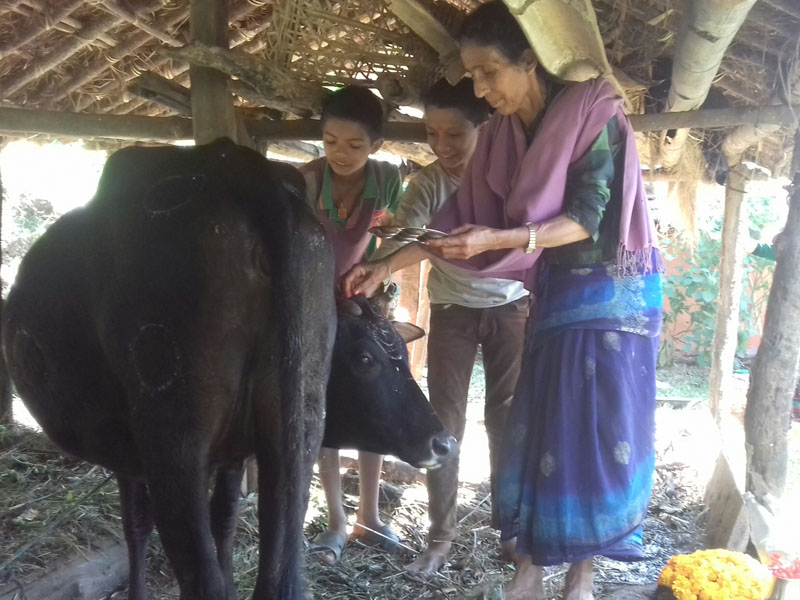Lakshmi Puja being observed throughout the country today
KATHMANDU: On the third day of the Yamapanchak, the Goddess of wealth Lakshmi is being worshipped with jubilation and various religious rituals throughout the country in the evening in accordance with time honoured tradition.
Lakshmi Puja is being celebrated in every household today to mark the third day of the five-day Tihar festival — the festival of lights — by lighting butter lamps and candles inside and outside the households to welcome the Goddess lighting up the path.
Nepali Hindus worship cows in the morning and Goddess Lakshmi in the evening wishing for prosperity on this day.
Cows are thought to be sacred which do no harm to others. Cow represents mother and earth in Hinduism. According to Vishnu Purana, when the Devas (Gods) and Asuras (evil) churned the ocean of milk (Ksheera Sagara), Goddess Lakshmi came out bearing lotus, along with divine cow.
All the nooks and corners of the house including the courtyard and rooms are illuminated with colourful and decorative lights this evening with the belief that Goddess Lakshmi does not visit places that are not properly illuminated, and to please Goddess Lakshmi, people light lamps and spend the whole night in vigil.
After the worship rituals take place, women of every household beat the Nanglo (a large bamboo straw woven plate) and enter the house from the courtyard to appease the Goddess and by wishing prosperity to enter their homes.
As per the scriptures Sri Sukta hymn is recited after worshipping Lakshmi and a coconut which is a favorite of the Goddess is offered to her and it is believed that this ritual ushers in prosperity.
The night of Lakshmi Puja is also known as 'the Night of Bliss'. The Lakshmi Puja is a day during which cultural programme 'Bhailo' is held.
Girls in groups called 'Bhailini' visit door-to-door in settlements singing the 'Bhailo' songs and praying the Goddess of wealth. In return, the house-owners offer gifts of Sel roti (a small cake made of fried rice flour, usually in the shape of a ring, or round and filled with, fruit, sugar etc), rice grains and money to the bhailinis.
(with inputs from Rastriya Samachar Samiti)






